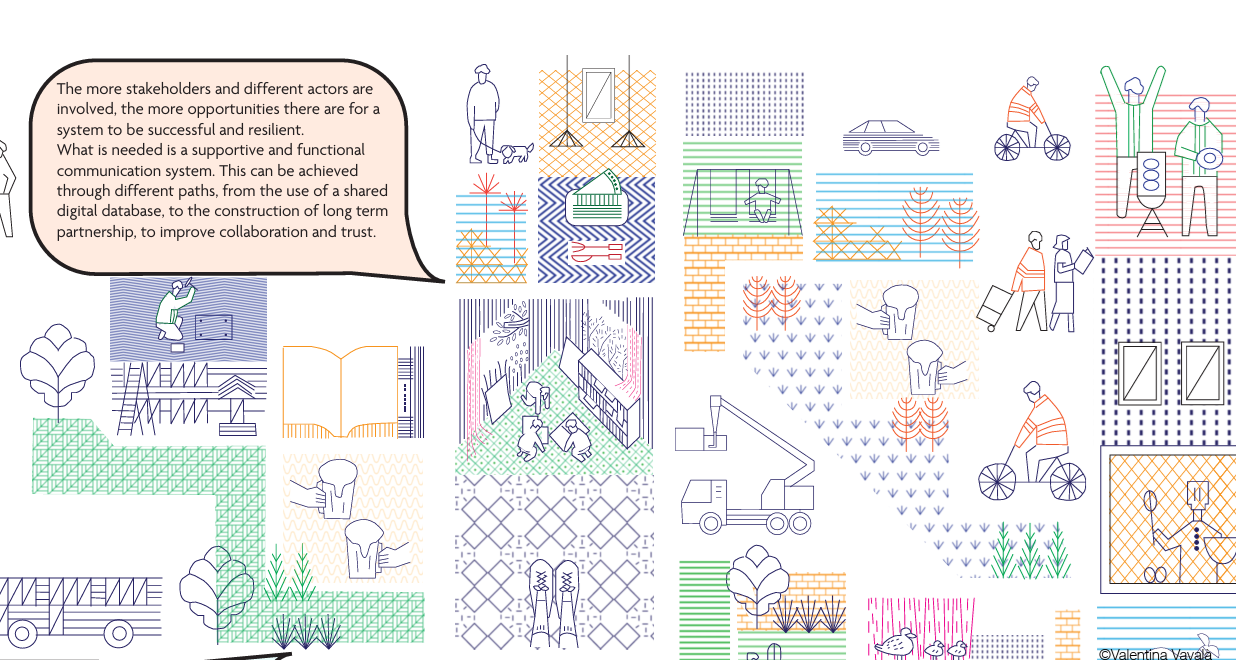Urban Design Colloquium + Elective Course
Students: Cemre Bingöl, Hanna, Broß, Jordan Lewa, Lilian Mehlem, Carolin Schwabe, Valentina Vavalà
Organiser: Chair and Institute for Urban Design, Faculty of Architecture, RWTH Aachen University
As ecological pressures intensify and urban systems struggle under outdated linear models, RWTH’s Urban Design Colloquium had a timely focus. It examined how adopting a circular approach could transform the spatial, cultural and operational foundations of our cities. With three guiding themes—the spatial turnaround, climate action and the circular economy—the colloquium examined how land use, material flows and planning processes could be reoriented towards long-term regeneration. The concept of spatial turnaround questioned how infrastructure and governance could evolve to support new circular functions. Climate action redefined urban space as not only a site of mitigation, but also an active agent of ecological repair. The circular economy shifted the focus from resource extraction to material stewardship, asking how urban systems could behave more like ecosystems: being interdependent, adaptive and resilient.
These themes were brought to life through a series of student projects that translated theory into tangible proposals for circular urban futures. Some projects explored the potential of construction hubs as multifunctional anchors, bridging material cycles, logistics and community engagement at regional and local levels. Others advanced modularity and standardisation as tools to unlock adaptability, making buildings easier to assemble, disassemble and repurpose over time. A systems approach informed proposals for digital material databases, planning interfaces and logistics networks, creating the operational backbone for circular economies. Social and temporal strategies added another layer, highlighting temporary reuse, participatory processes, and urban repair cultures as essential drivers of resilience. Overall, circularity was redefined as a networked approach to design, governance, and daily life, rather than a single intervention.
Circular urban landscapes require more than just technical solutions; they also need cultural imagination, collaborative frameworks and the courage to experiment. This body of work presents a powerful vision of cities as living systems that are efficient and generous in their regeneration, redistribution and adaptation. Circularity becomes a civic project, connecting stakeholders through shared responsibility, localised action and meaningful participation. Rather than merely closing loops, these projects demonstrate how circularity can become a spatial practice of care, creating places that are resilient in times of disruption and open to transformation while remaining rooted in place. They offer a collective invitation to imagine and build sustainable cities that are more connected, inclusive and vibrant.
